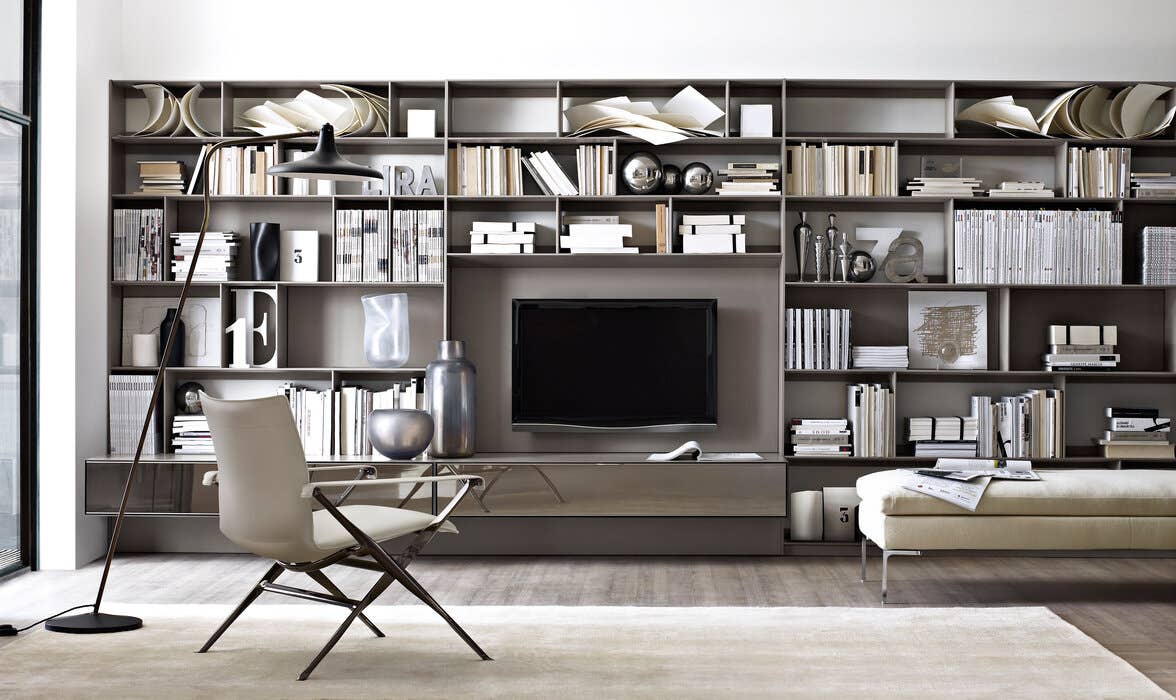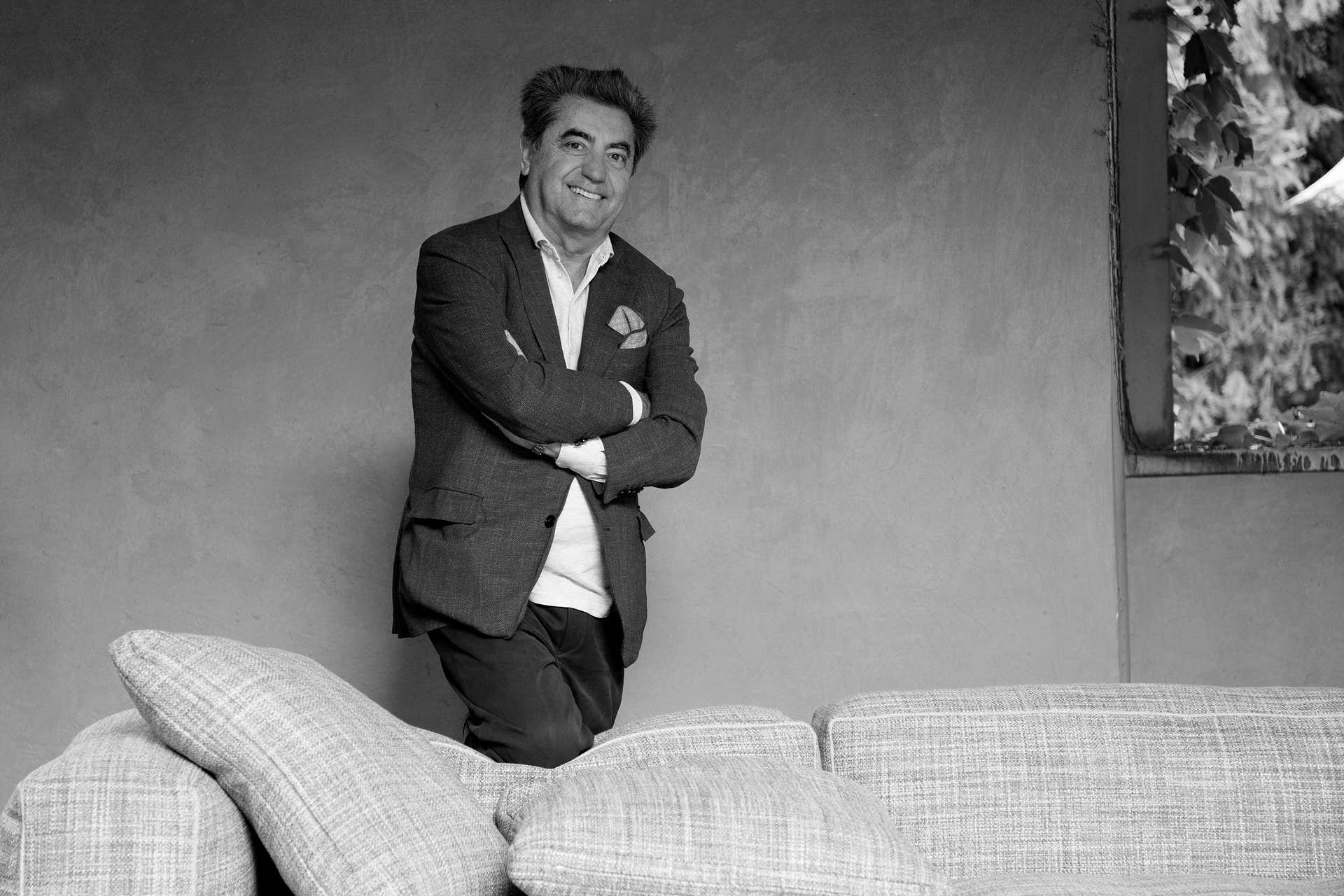
Flat.C

Description
Flat.C interprets the wall-system as an open system that can be reconfigured and reassembled. Advanced and flexible, Flat.C suggests a free way of occupying space, following the evolution of multimedia systems. The Flat.C storage units offer an intelligent use of space through an almost infinite number of different configurations based on a modular grid that organises the composition elements and restricts proportions. As we all have size constraints in our houses, we need furnishings that can store large amounts even in limited spaces. Flat.C was designed to house books, a television and hi-fi accessories in the smallest amount of space possible. As the name suggests, Flat.C is a solution offering shallow depths and thicknesses. Measuring only 25 cm in depth, the thickness of the shelves and sides has been reduced to the minimum. Moreover, there are no visibly joined parts. All this creates a versatile furnishing project that fits discreetly into the room, while elegantly fulfilling its storage purpose.
“How do you transform a house? What reference points do you use to reorganise space in homes of the future? How will the objects that populate our homes change? Which new electronic devices will enter the domestic realm to extend the perception of our living spaces?
These are the questions that guided the Flat.C project design.
Inspired by the minimum dimension, Flat.C constitutes the latest chapter in my search for dimensional upgrading within wall-system products.
Flat.C is flat - like the screens in our collective imagination, which are linked to the new ways of viewing video and images.
The goal was to obtain a flexible system where it was possible to foresee an almost infinite number of different configurations based on a modular grid that organises the composition elements and restricts proportions.
The range of storage units determines the intelligent use of space.
Flat.C is a reconfigurable open system that can be reassembled. It expresses a free way to occupy space and can follow the evolutions of multimedia systems.
Media in a home will change. The piece of furniture that holds them won't.”
Antonio Citterio
Lateral sides, central sides, side end elements, central and upper crosspieces, baseboards, binary covers, cable flap duct, cable flap duct with light
aluminium extrusions
Tops, shaped tops, top end elements, partitions, backs, back end elements, covers for sliding door and cable flap duct, audio video storage unit, open projecting elements, projecting elements for flap door, projecting elements for drawer, extractable tray audio video element, multipurpose top
wood particles panel, MDF wood fibre panel
Back panels for TV/Home office
panel in cellulose fibre impregnated with thermosetting resins, subjected to high pressure processing
Glass top, glass top for cable flap duct, flap doors for audio video element
tempered glass
Sliding doors, flap door for projecting elements, drawer fronts for projecting elements
glass, wood particles panel, MDF wood fibre panel
Internal shelves for projecting elements with flap door, internal shelves for projecting elements with drawer
tempered glass
Cable flap
aluminium
CD/DVD frame
anodized aluminium extrusions
Frames
steel
LED lighting system
Strip LED HE, 12V DC 1.65 W 5000K
EU power supply unit
input voltage 220-240V 50Hz, output voltage 12V DC, maximum wattage 30W
US power supply unit
input voltage 110-120V 50Hz, output voltage 12V DC, maximum wattage 30W
Touch-LED switch
operating voltage 12 V DC
Dimensions & Download
Are You an Architect or a Designer?
Register to the reserved area for moodboards, 2D, 3D, Revit, inspirational images and much more



























